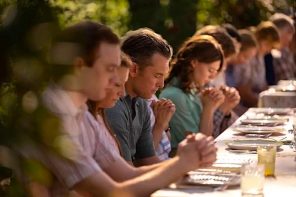When he visited mormonsandgays.org shortly after its official launch yesterday morning, Jayce Cox cried.
There at the new LDS Church-owned website, Cox, a gay Mormon man with six generations of family history in the LDS faith, saw video messages from top-ranking Church leaders and rank-and-file gay Mormons calling explicitly for greater understanding, openness, and dialogue around LGBT issues and an end to the rejection of gay family members, congregation members, and neighbors.
As a young man, Cox had tried to shake his homosexuality. He moved from his home in East Helena, Montana, to a predominantly Mormon community in Las Vegas, Nevada, so that he could be surrounded by LDS people. He served in the Church, attended LDS temple services, worked for a Church-owned bookstore, got engaged to a woman, and prayed earnestly that he’d feel the same kind of attraction to her as he did to men.
“But one day in the temple,” Cox says, “I got the impression I was asking for the wrong thing: that I should be asking to love myself the way God loves me.”
Cox called the wedding off and came out to his family. His father gave him one week to move out of the house and instructed him to minimize contact with his five brothers and sisters. Cox stopped wearing his LDS garments and moved in with the first roommate he could find—the bartender at the local gay bar. Soon, he had a boyfriend, and along with his boyfriend, Cox was assaulted—gay bashed—in front of a Las Vegas club.
He moved home to Montana, where he helped start the Montana Pride Foundation, organizing parades and HIV testing for Montana’s LGBT community. But he never stopped being Mormon. “I could never shake my beliefs,” he said. “I couldn’t go to church because I felt guilty, and it was a small town and everyone knew. But my gay friends would get mad at me for being LDS.”
As the years went by, Cox stopped smoking and drinking, and finally decided that he was happiest living as a celibate man. But even though he is living an observant Mormon life, it hasn’t been easy to go back to church and face the discomfort and quiet judgment his fellow Mormons sometimes direct at LGBT people. “I know that’s just Mormon culture,” he says.
“But seeing the videos today, and the sincerity of those messages about looking beyond our differences and seeing each other as human beings—it just broke me,” Cox said.
“Some people might say it’s too little too late, but I think it’s never too late. Had this message been out 10 or 12 years ago, my parents would have reacted very differently. I could have said, ‘Hey, sit down with me and watch the [LDS Church] apostles say not to reject your child.’ And now I can say to my local bishop: ‘Whether you like it or not, I’m coming to church. You don’t have to give me a calling. As soon as I become a full tithe payer, I want to start attending LDS temple services again. That’s what I want the most.’”
“Today, our authoritarian Church that once had an answer for everything finally said, ‘We don’t really understand everything about being gay but Christ has commanded us to love and the Church needs to become a safe place.’ I’ve been praying for this since 1992.”
There is no change in doctrine announced at mormonsandgays.com: no revision to the Church’s position that being gay is not sinful although having gay sex is.
And the site may miss an opportunity in providing the explicit helps for Mormon parents of gay youth developed by public health researchers working in cooperation with Mormon lay leaders at San Francisco State University’s Family Acceptance project.
But with its explicit call for improved treatment of LGBT people within Mormon communities, the mormonsandgays.com site opens new horizons of possibility.
Kendall Wilcox, a gay Mormon and maker of the documentary Far Between, “I am encouraged by the fact that the Church is promoting the value of listening to and empathizing with the lived experiences of gay people as they reconcile faith and sexuality.”
“Up to now so many families have been torn apart by gay issues,” says Erika Munson, founder of Mormons Building Bridges. “It is heartbreaking if a parent thinks God wants her to turn her back on her gay child. The message of the stories and statements on the website pretty clearly identifies this behavior as destructive and un-Christian.”
“It’s time to stop simply talking about what our Savior would do, and roll up our sleeves and actually do it,” said Mitch Mayne, an openly gay LDS man who serves in the leadership of his San Francisco congregation. “I’d like to see congregations emulate what we’re doing in the Bay area—opening the doors to everyone, including our LGBT brothers and sisters, and allowing them to be part of our ward families without fear of excommunication—whether they’re living within the confines of the policy as we understand it today, or are in a longterm committed relationship with someone of the same gender, or are dating someone knew every night. Once that happens, we can begin to consider ourselves to be closer to emulating the true, unconditional love our Savior already has for all of us.”
And when that happens, Jayce Cox and others like him will truly be able to come home.




